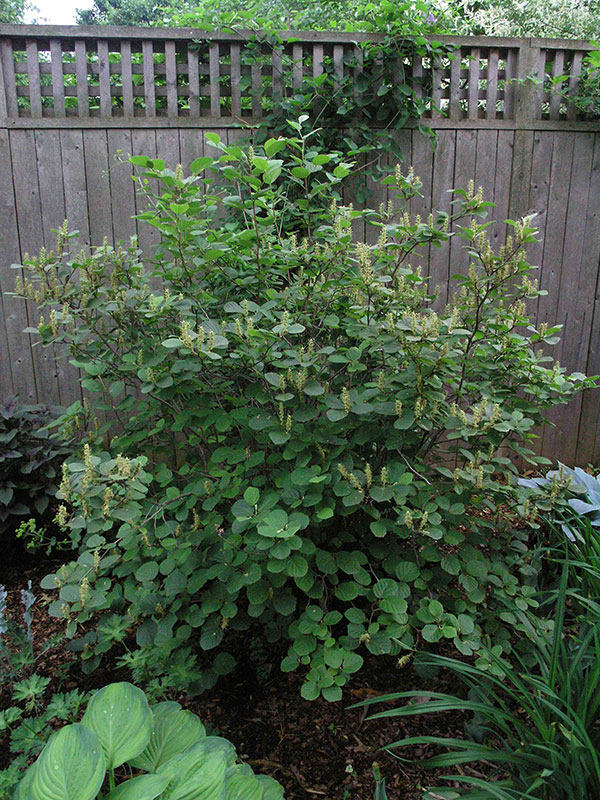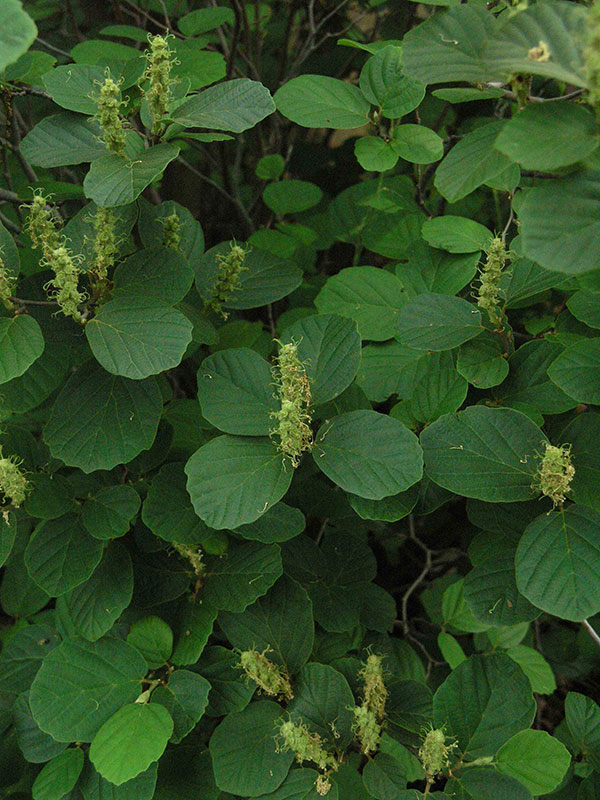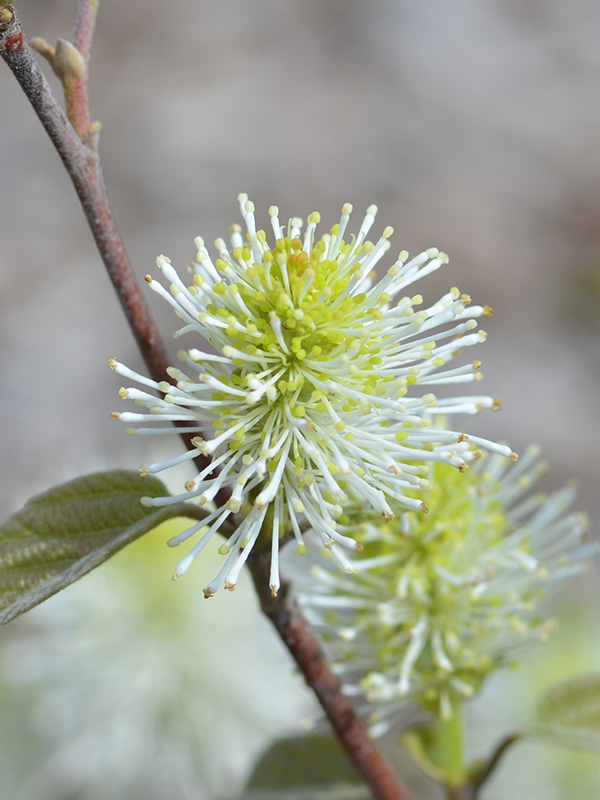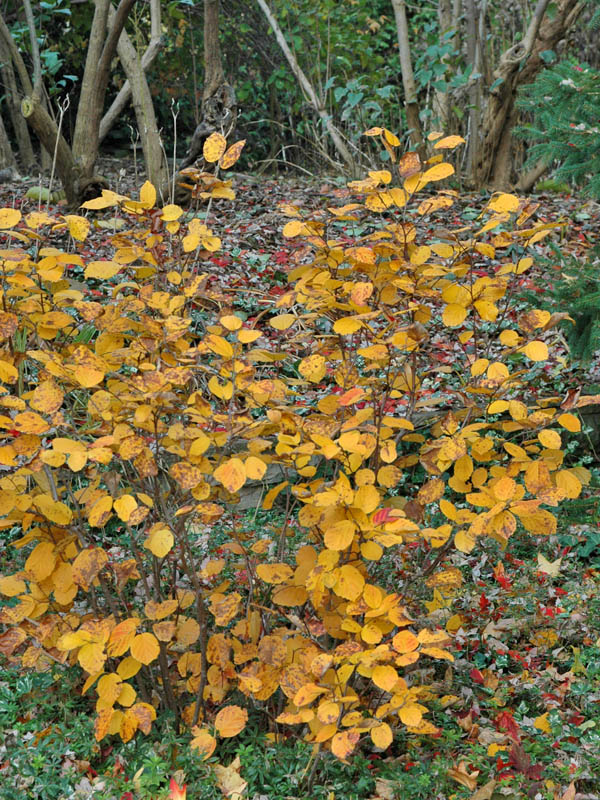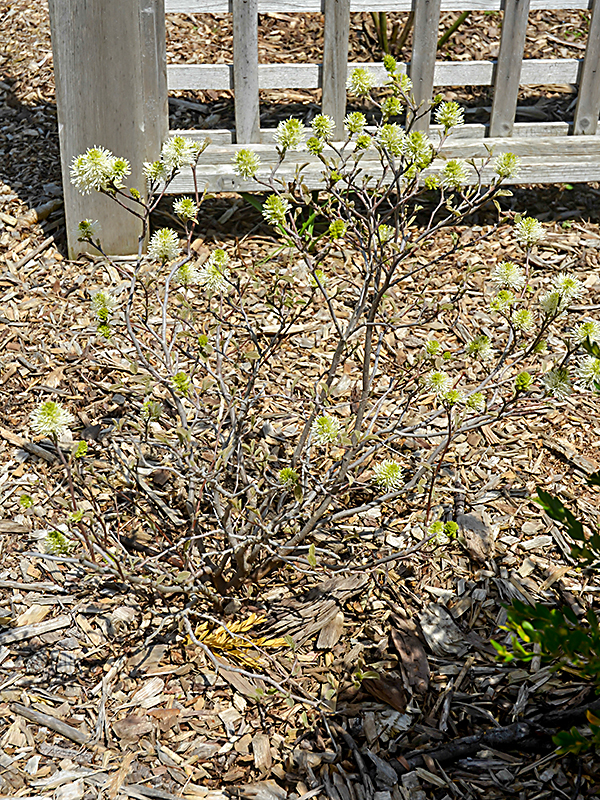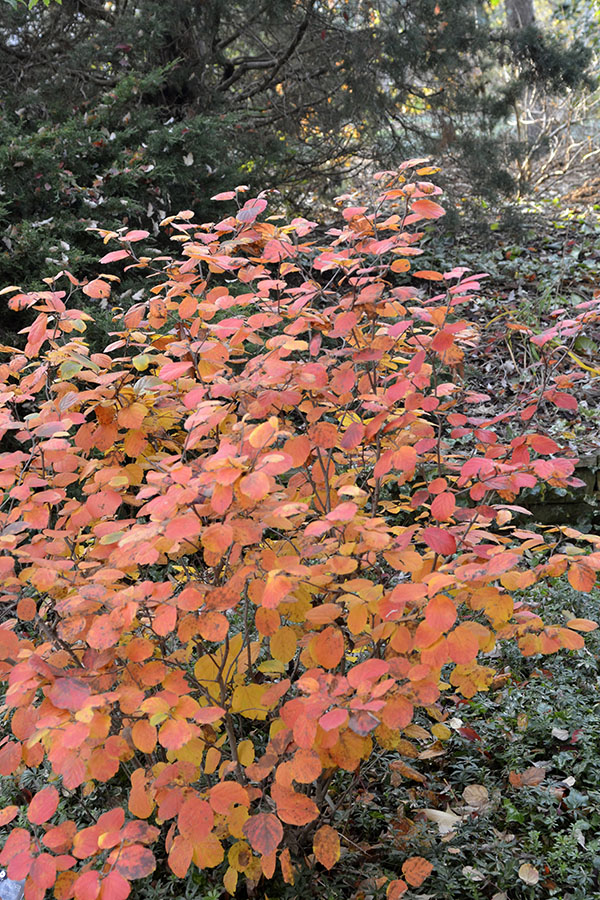
Woody > Fothergilla > Fothergilla gardenii > Fothergilla gardenii
Fothergilla gardenii
Dwarf Fothergilla, Bottlebrush
Origin: A Scottish physician named Dr. Alexander Garden (1730 - 1791) who came to Charleston, South Carolina, USA and was a friend and correspondent of the Swedish botanist Carl Linnaeus (1707 - 1778) discovered several 'new' plants in the area. Initially one of these discoveries was named Anamelis since it was related to Hammamelis. However in correspondence with Linnaeus in 1774 the new genus of plant was named Fothergilla in honour of Dr. John Fothergill (1712 - 1780) an English physician who took part in many scientific discussions with Garden, Linnneaus and the prominent Philadelphia Quaker botanist John Bartram (1699 - 1777).
Mike's
Opinion


"
An excellent specimen plant, interesting fragrant apetalous flowers in the spring that bloom before foliage. Vibrant autumn colours, lush dark green foliage in summer. Fothergilla gardenii is closely related to Witch Hazel and shares many of the same desirable qualities.
Michael Pascoe, NDP., ODH., CLT., MSc. (Plant Conservation)
"
| Family |
| Hamamelidaceae |
| Genus |
| Fothergilla |
| Species |
| gardenii |
| Category |
| Woody |
| Type |
| Shrub (deciduous) |
| Pronunciation |
| USDA Hardiness Zone |
| 5 - 8 |
| Canadian Hardiness Zone |
| 4a - 8a |
| RHS Hardiness Zone |
| H4 - H7 |
| Temperature (°C) |
| -29 -(-7) |
| Temperature (°F) |
| -20 - 20 |
| Height |
| 45 - 90 cm |
| Spread |
| 60 - 120 cm |
Photographs
Description and Growing Information
Flowering Period
| General Description |
| Neat, weakly rounded dwarf shrub with interesting dense apetalous flowers. F. gardenii has obvate, deep veined leaves with intense autumn colour. |
| Landscape |
| Planted mostly as a specimen for its interesting, bottlebrush like, fragrant flowers, which appear in late April to early May, before any leaves emerge. Fothergilla grows best in full sun and well drained, moist soils. These conditions give the best autumn colour: brilliant orange, red, and yellows appearing on one leaf. |
| Cultivation |
| Requires full sun to produce intense autumn colour and abundance of flowers, but can grow in partial shade. Prefers soils that are well drained, moist and high in organic matter. Slow to establish that thus attention must be paid to its cultural requirements. |
| Shape |
| F. gardenii has a neat, weakly rounded, slender dwarf form. |
| Growth |
| Slow |
| ID Characteristic |
| F. gardenii most notable features are the bottle brush like, petal-less flowers, that bloom before the appearance of leaves. Leaves are shallowly toothed, obovate with intense autumn colour: red, yellows and orange on the same leaf. |
| Pests |
| F. gardenii is resistant to most pests and diseases. |
| Habitat |
| Fothergilla gardenii is found along swamps and pond edges and wet, low lying areas in the Atlantic and Gulf Coastal Plain, from northeastern North Carolina south to the western panhandle of Florida and Alabama. |
| Bark/Stem Description |
| Bark is tan and not as notable as the rest of the plant. |
| Flower/Leaf Bud Description |
| Buds on F. gardenii can be obvate or oblong with larger terminal buds. Buds have two large scales that are shed early. Flower buds are 4 - 5 mm around and pear shaped. |
| Leaf Description |
| Leaves are alternate, shallowly toothed, deciduous, obovate, 4 - 5 cm long and 2 - 5 cm wide, the petiole is 9 mm in length. Prominent leaf venation characteristic of members of the Hammamelidaceae family. |
| Flower Description |
| Monoecious, apetalous and white in colour. Plush part of flower made up of numerous stamens that look like airy bottlebrush like spikes, 3 - 5 cm long and 2 - 4 cm wide. Set up as dense terminal spikes above foliage. In spring, blooms give off the scent of honey. F. gardenii flowers prior to foliage emergence unlike F. major where both the foliage and bloom emerge concurrently. The species flowers about one week earlier than F. major. Creamy white spent flower stalks which are not unattractive may persist for several months after bloom. |
| Fruit Description |
| The fruit of F. gardenii is 2 cm long, dehiscent, two valved capsule that is green-brown in colour and persist throughout the summer. |
| Colour Description |
| Interesting white flowers, intense red, yellow, and orange autumn colours appearing on the same leaf. |
| Texture Description |
| F. gardenii has thick density and medium foliage texture. |
| Notable Specimens |
| The A.M. Cuddy Gardens, Strathroy, Ontario, Canada. |
| Propagation |
| F. gardenii has a two valved capsule that ripens in September. This capsule should be collected before dehiscence occurs. Place the capsule in a brown paper bag and store in a warm, dry place until the capsule splits open and releases the seed. Seed require a six month warm period to germinate. Locations like a window sill or greenhouse bench to allow fluctuation between night and day temperatures are ideal. Fothergillas may also be propagated from young shoots successfully in June and July. |
References
Leahy, J. A.; Ani?ko, Dr. Tomasz. 2008. "Wild about Fohergilla". American Nurseryman. May: 16-23.
